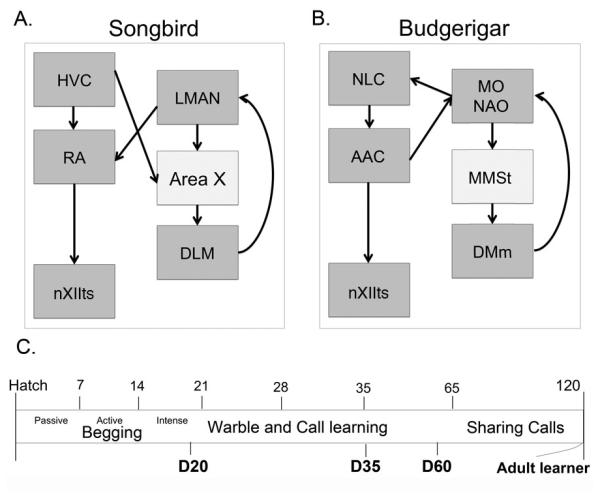Figure 1.

Shown here is a general schematic of interconnected vocal control nuclei in (A) the songbird brain and (B) the budgerigar brain (Nottebohm et al., 1976; Striedter, 1994). Area X and MMSt in the basal ganglia are part of a cortico-basal ganglia-thalamo-cortical loop important for learning acoustic gestures (Petkov and Jarvis, 2012). The songbird and budgerigar CNS via nXIIts projects to the syringeal muscles that produce sound. (C). Vocal development of budgerigars begins after hatch with food begging calls followed by a transitional period around D20 when socially-learned vocalizations first appear. Adult like vocalizations begin to emerge around D35, and at around D60 birds begin to join social groups and imitate conspecifics (Brittan-Powell et al., 1997; Hall et al., 1999). Vocal learning in new social groups occurs frequently in adults. The present study used birds that were isolated and recorded at the ages shown in bold, D20, D35, D60 and adults D>120. Abbreviations: Songbird: Area X and HVC are used as proper names: DLM, medial portion of the dorsolateral thalamic nucleus; LMAN, lateral magnocellular nucleus of the anterior nidopallium; RA, robust nucleus of the archipallium. Budgerigar: AAc, central nucleus of the anterior arcopallium; MO, oval nucleus of the mesopallium; MMSt, magnocellular nucleus of the medial striatum; NAO, oval nucleus of the anterior nidopallium; DMm magnocellular nucleus of the dorsomedial thalamus; nXIIts, tracheosyringeal motor nucleus, a portion of the 12th (hypoglossal) nucleus.
